Ops
SUMMARY
Ops is a two-player card exchange game played with open hands. The goal is to arrange one's hand so that simple arithmetic operations can be performed across the rows and columns of the layout. Similar to chess, the rules are easy to understand but game play can involve complex strategies. Ops was invented by Bogart Salzberg .
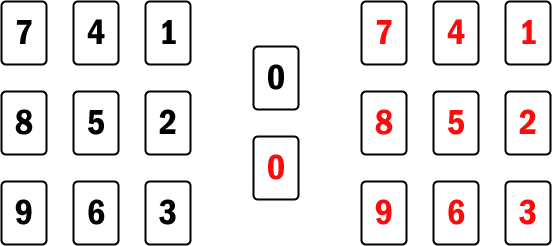
SET-UP
Each player begins with a 3 x 3 layout of cards ace through 9 of a particular suit (usually spades and hearts) arranged like a telephone or calculator keypad, with the 3 always in a position called "the hole". This places the 7, 8, 4 and 5 in a square called "the main" and the five other cards in "the margin". Tens from both suits (representing zeroes) are also placed in a common area called the "dish".
OBJECTIVE
The game is won when the hand is arranged so that the cards in the main can be added, subtracted, multiplied or divided to produce the values of cards in the margin.
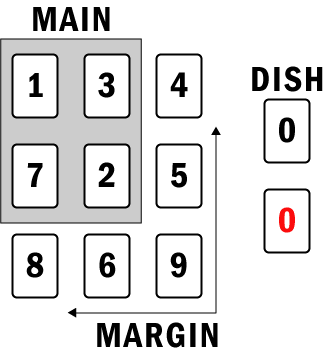
Each of the two rows and two columns of the main must correspond to the margin card below or beside it. The hole card is therefore not used in the "proof" of a winning hand.
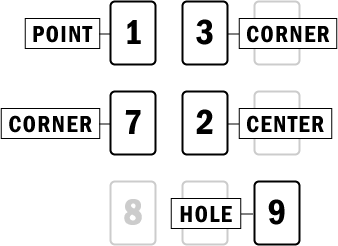
EXAMPLE PROOF
In this example proof, the four arithmetic operations are "1 + 3 = 4", "7 - 2 = 5", "1 + 7 = 8", and "3 x 2 = 6". The hole card is not shown because its value is not used in the proof.
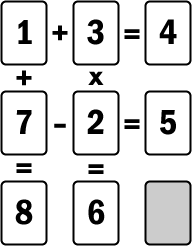
RULES
In each turn a player may exchange one his own cards with another card in his own hand or, with exceptions, a card in his opponent's hand or the dish. A player may not retrieve one of his own cards from an opponent's hand, or the dish, and may not take an opponent's card having the same value as one taken from his own hand in the last move.
As trading continues, each player tends to accumulate a greater share of his opponents cards. When a player's hand is made up entirely of cards from his opponent's hand, the opponent is unable to alter it. Such a hand is "locked". At this point, the "trading round" has ended and the players continue exchanging cards independently until one has a winning hand. In a common variation of Ops, the closing of one trading round is immediately followed by the opening of another, as the players switch their "home suits".
It is possible that both hands can be made "provable" in the same move, in the event of an exchange from one hand to the other during the trading round. In this case, the player who initiated the move loses the game.
EXAMPLE GAME
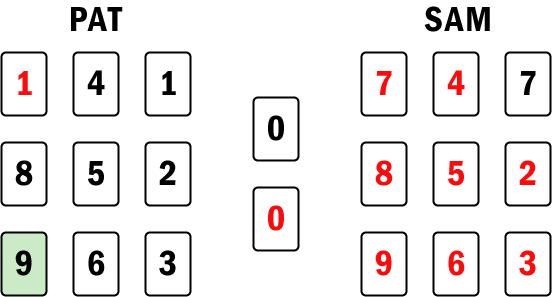
1. Pat puts the red 1 (ace of hearts in a conventional deck) on the point. A large proportion of solutions have 1 on the point. Also, the left column is immediately solved, denoted by the green margin card.
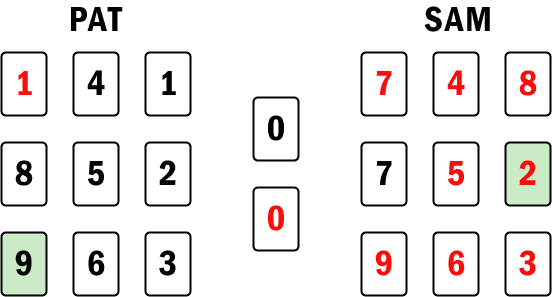
2. Sam solves the center row by exchanging two cards within his own hand.
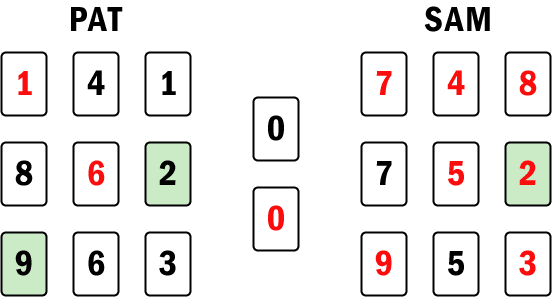
3. Pat solves his own center row.
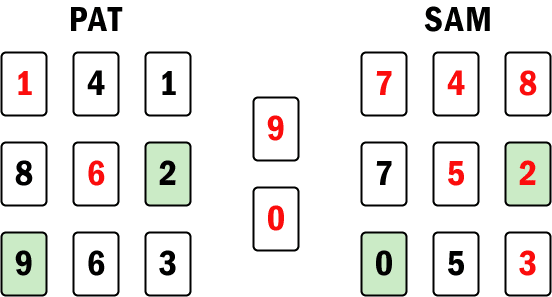
4. Sam trades with the dish to solves his left column.
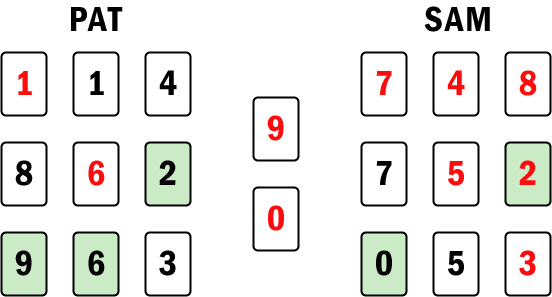
5. Pat could win the game by trading his 4 for the 0 in the dish, but misses the move and instead swaps his 1 and 4, solving the center column.
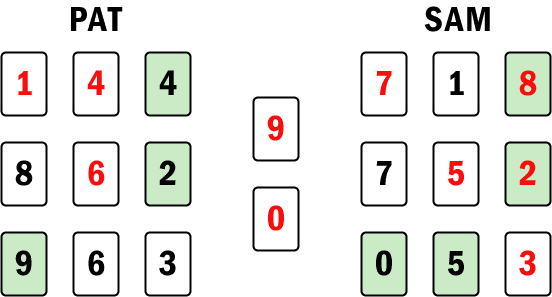
6. Sam trades for Pat's 1 and wins the game.
SOLITAIRE VARIATION
A simple solitaire variation consists of shuffling the ace through 9 cards of a suit and laying them out, face up, in the 3-by-3 pattern. (There are 181,440 unique starting positions). The challenge is to solve the hand in the fewest possible moves. All hands can be solved.
STRATEGY
There are more than 100 solutions for the "natural" hand (1 through 9, as in the solitaire variation) and hundreds more for hands that can be assembled during the trading round in a two-player game.
For solutions to the natural hand, 1 and 2 are the most likely to appear in the main, followed by 3, 5, 7, 4, 6, 9, and finally 8.
The 9 card is on the point in almost a quarter of solutions to the natural hand (25) times, followed by 1 (15 times) and 2 and 7 (11 times). The 2 card appears in the center of a natural hand solution 25 times, followed by 3 (23) and 1 (20).